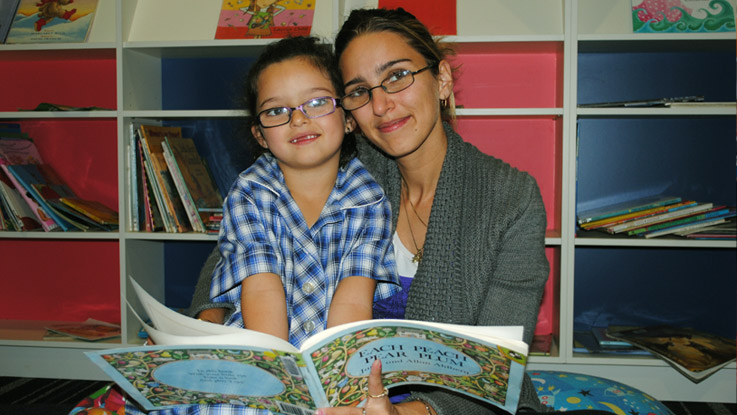
Opinion: Reading skills of children in South Australia
This article was first published in The Advertiser in January 2014.
The news at the tail end of last year that a two-and-a-half-year learning gap exists between vulnerable young Australians and their more well-off peers in maths, science and reading was the latest in a long line of sobering data that should concern anyone with an interest in our state’s future productivity and social cohesion.
It was further confirmation that many disadvantaged young South Australians – who make up the bulk of those underperforming – aren’t getting the education they need and will struggle to realise their potential.
The fact is that many disadvantaged South Australian kids – along with the peers throughout the country – start their schooling behind and don’t catch up.
One-fifth of Australia’s kids are developmentally vulnerable in one or more key areas when they start school.
Once at school, children from vulnerable backgrounds often don’t have access to important learning resources such as books or a computer in their home.
Financial difficulties also means many are unable to participate in school camps, hobbies and the sport and leisure activities that are the norm for other young people.
This not only has an impact on their learning and development, but can also leave them feeling isolated from their peers.
And as they reach their teens, children in communities with high levels of early school leaving and unemployment often lack positive role models and the networks so crucial in building resilience.
Without access to such important foundations, they are likely to lower their educational and career aspirations.
That’s what we’re up against if we’re going to have any chance of closing the gap in educational performance.
The Smith Family recently released a report detailing the results of a national reading program – student2student – which it offers in young people’s homes in 75 communities around the country, including nine in South Australia.
Student2student improves the reading skills of children in Years 3 to 8 – who have a reading age up to two years behind their chronological age – by matching them with trained reading buddies who are at least two years older.
It runs over an 18 week period with the pair connecting over the phone two to three times a week, for at least 20 minutes at a time. The student reads to their buddy over the phone from books provided by The Smith Family which are appropriate to their reading level.
Of 742 participants in student2student, 93 per cent have improved their reading with two-thirds boosting their reading age by more than six months.
Student2student is by any measure a success and it’s addressing one of the key gaps in education performance between disadvantaged kids and their more well-off peers: reading skills.
Even better it’s doing so in an affordable way at the cost of only $1100 per child.
As has been pointed out by multiple commentators, Australia has seen a real increase in education spending over the past two decades but with limited returns in terms of improved literacy and numeracy.
Funding is one thing, how we spend it is another.
We need to make sure increased funding is actually being spent on programs that work to lift performance – and at an early age before problems become entrenched.
Trying to turn around poor literacy and numeracy among teenagers is extremely expensive and resource-intensive.
Across Australia there are hundreds of individual programs and pilots aimed at addressing educational disadvantage – all well-intentioned – but we need to pick some winners.
We need to choose programs that have evidence behind them and find ways to scale them up nationally.
The Smith Family is calling on federal and state/territory governments – along with corporate Australia – to co-operate in the expansion of student2student to help improve the reading skills of vulnerable young Australians.
As we look to how we can improve our educational outcomes, we need to broaden our thinking beyond solely what happens at school. Parental engagement and the home learning environment are also crucial.
Student2student occurs outside the classroom and complements what happens at school.
It sees children reading more frequently, increases their enjoyment, and helps them develop a positive relationship with a friendly peer mentor – all factors that research has shown to increase the skills of poor readers.
And it’s not just governments that we think should come to the party. We think there’s a strong case for corporate Australia to offer its financial support as well.
Without a well-educated workforce, businesses will struggle to meet the challenges and opportunities of a 21st century economy.
Optus is a major financial supporter of student2student, it would be good to see other corporates follow its lead.
The foundations of a civilised country are built on all its citizens having access to and receiving a comprehensive education.
From The Smith Family’s experience, many young Australians – including in our state – are currently missing out on that opportunity.
That diminishes us all.
Graham Jaeschke, General Manager - South Australia and Northern Territory, The Smith Family
Media contacts:
Andrew Dickson | National Media Manager (National) - 0421 285 529 | andrew.dickson@thesmithfamily.com.au
Carla Horton | Senior Media Advisor (QLD & WA) - 0423 618 776 | carla.horton@thesmithfamily.com.au
Reid Jermyn | Media Advisor (VIC, SA & NT) - 0412 803 566 | reid.jermyn@thesmithfamily.com.au
Ben Chenoweth | Senior Media Advisor (NSW, ACT & TAS) - 0413 346 934 | ben.chenoweth@thesmithfamily.com.au
The Smith Family is a national children’s education charity that helps young Australians experiencing disadvantage to create better futures for themselves through harnessing the power of education. We partner with around 800 Australian schools and work with over 162,000 children and young people experiencing disadvantage access our education support programs to help them overcome . For more information, visit thesmithfamily.com.au
